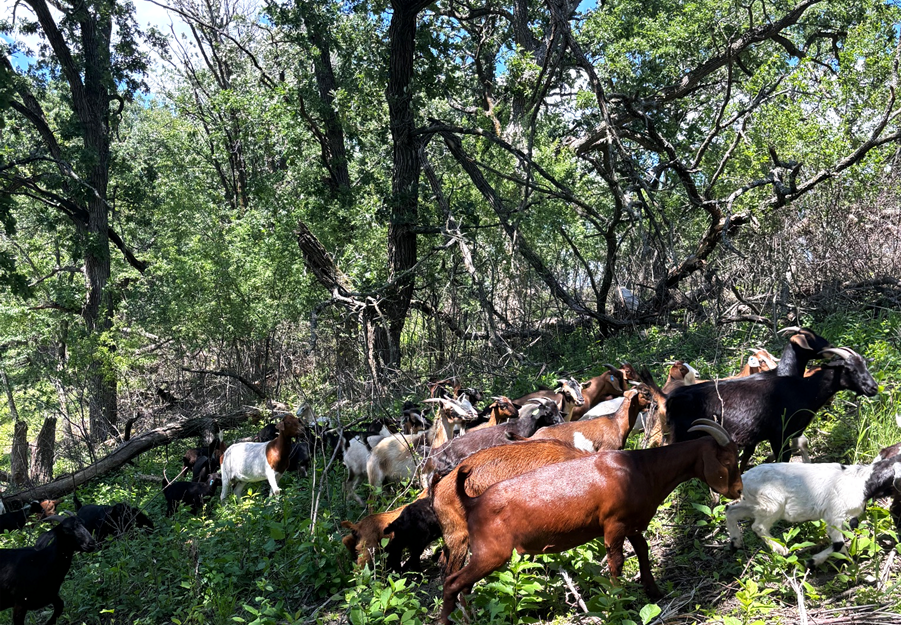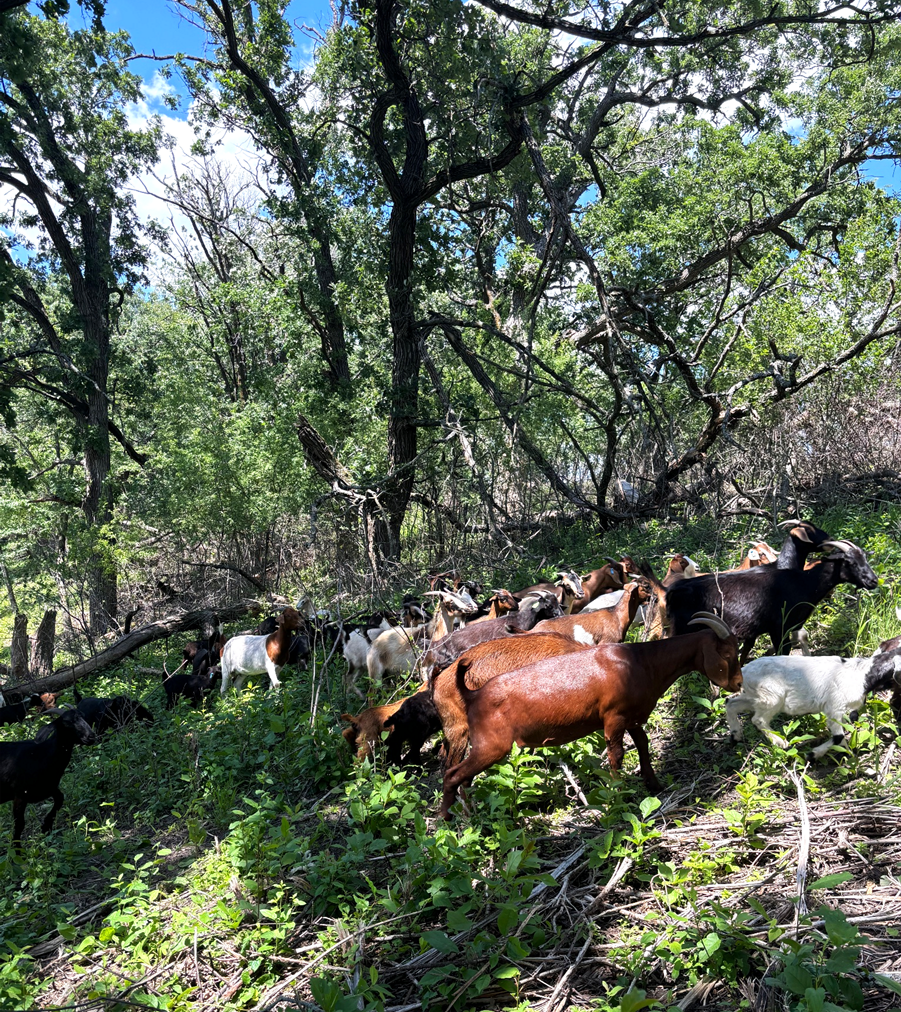Management Through Innovative Means

By Emma Klemmensen, Mankato 2 Field Crew Member / AmeriCorps Member
When we think about ways to reduce the presence of invasive species we often consider methods like using herbicides, prescribed burns, mowing, or pulling and digging them out of an area; however, due to the resistance of particular species, conservation has recently turned to the use of less traditional methods such as goats. According to the Ohio State Pressbooks, using goats as a means for removing invasive species became popularized in 2013 when they were used to clear plants from the congressional cemetery in Washington, D.C. Here in Southern Minnesota, we most notably use goats for removing Buckthorn.
Why Goats?
Although researchers are still looking into the specific effectiveness of this biological control method, there are many positive reasons for the employment of goats in areas affected by invasive species. Some of these reasons being that goats are a much more natural means of control compared to herbicides, they fertilize natural areas while working, and that goats are fond of climbing so they can reach places that machines and people may struggle to. The Goat Dispatch also says that goats have enzymes in their stomachs which make them capable of digesting plants that are poisonous to most other organisms (such as the poison ivy that they helped clear from the congressional cemetery), they provide pest control for ticks and mosquitos by reducing their habitats, and are much more cost effective method. There are also studies done by the University of Minnesota that suggest that when goats consume buckthorn, only 2% of immature seeds survive and of that only 11% are viable, meaning that consumption of buckthorn seeds by goats greatly reduces their chances of sprouting new plants (to only about .22% of a seed successfully sprouting).
How can we solve any downsides associated?
Because scientists are still learning more about exactly how useful using goats as a means of biological control is, there are also questions regarding the downsides of such. For example, researchers at the University of Minnesota found that the use of goat browsing to control buckthorn was a useful means of lessening the presence of the plant, however that continued stewardship and diverse management methods were the best practice for restoring native vegetation.
On another hand, researchers worry about goats becoming infected while working via consuming a deadly parasite called P. tenuis from snails and slugs. In an effort to contradict this possibility, researchers have determined that co-grazing waterfowl in these areas can decrease the possibility of an effect on the goats.
